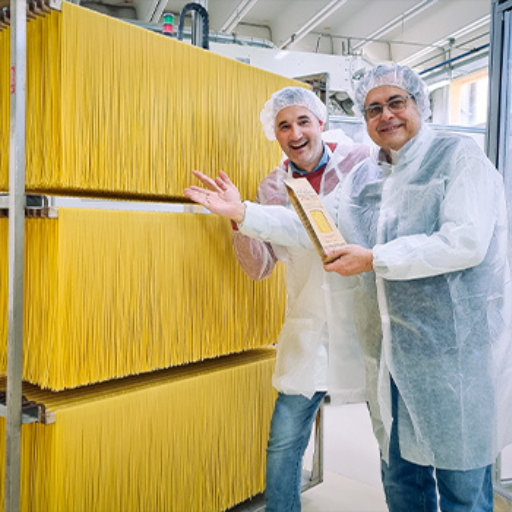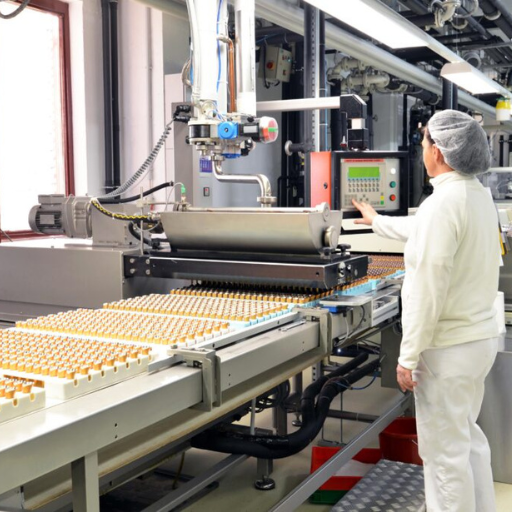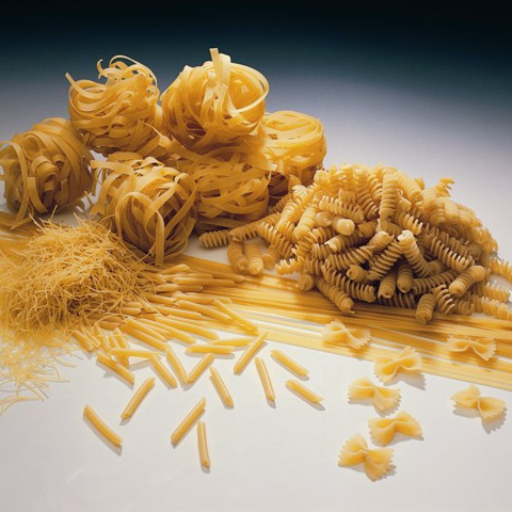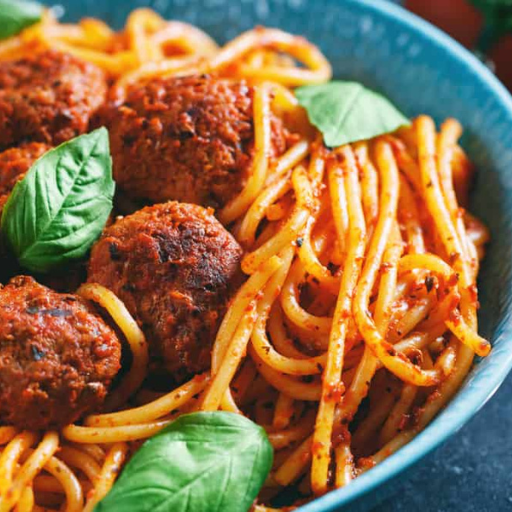Pasta is a beloved staple in cuisines around the globe, revered for its versatility and delightful range of shapes and sizes. But have you ever wondered what it takes to produce this pantry essential on a massive scale? In this article, we take you behind the scenes of the world’s largest pasta factory to uncover the intricate and fascinating process of pasta manufacturing. From sourcing the finest ingredients to the modern machinery that shapes and dries the pasta, we explore each step that transforms simple wheat and water into the delicious pasta that graces our plates. Journey with us as we peel back the layers and unveil the dedication, technology, and precision involved in delivering high-quality pasta to kitchens everywhere.
The Journey from Flour to Pasta: Understanding the Production Process
Choosing the Right Flour: Why Semolina and Durum Wheat are Essential
Semolina and durum wheat are important for making pasta due to their unique characteristics. Semolina is a coarse-textured flour with a high gluten content which makes it firm and elastic when used to make dough. The elasticity in pasta dough is very important as it helps keep its shape while cooking without disintegrating into a mush. Moreover, the high protein content of durum wheat contributes to the al dente texture that identifies quality pasta. Consequently, semolina and durum wheat are both healthy, strong, and greatly textured.
The Art of Kneading: How Pasta Dough Reaches Perfection.
Kneading pasta dough serves as a vital step that results in smooth, uniformed and stretchy dough. This begins by combining semolina flour and water before mixing them until it forms into rough dough. At this point, the dough can be either hand kneaded or use machine kneading which will help develop gluten network giving structure and strength to the dough. Normally, this process takes approximately 10-15 minutes of continuous kneading. When the dough gets to its right consistency – should be firm but pliable – it’s time for resting. Resting helps relax the gluten so that rolling it out and shaping into various types of pastas could be possible . Mastering how to knead is critical because this affects directly the texture as well as final product quality of pasta.
Drying Process: Ensuring Perfect Texture of Dry Pasta.
Proper drying of pasta is essential for obtaining accurate texture and taste characteristics. According to leading sources on this subject matter, drying starts shortly after forming fresh pasta shapes. First off however, prior drying commences immediately upon completion of production just under an hour or two usually at controlled temperature plus humidity levels so as not break apart resulting from cracking occasionally observed in some cases during handling processes within subsequent processing steps such as cooking usage which means time duration when temperature remains constant at 60°C may be less than 30 minutes.
Conclusively, the pasta is moved to another area where it goes through a lengthier drying period at a much lower temperature usually between 40-60°C (104-140°F) for a maximum of three days depending upon what kind and how thick your noodles are but this measure will avoid brittleness while maintaining its shape on surface, if these above mentioned steps are precisely followed like stated before in detail by experts in such process that help manufacture dry macaroni-based products thereby ensuring their suitable quality characteristics possibly would not just have best taste flavor but also provide mouthfeel without breaking apart because if improperly dried then cooked uncooked right after reaching boiling point finished product would become crunchie even though retain it’s separate parts were chewable; properly dehydrated one must keep same all times while being consumed throughout entire srage cooking anything edible specific type treat known certain people who enjoy eating them often referred as or those who need something quick easy prepare because sometimes cookers give users an opportunity select preferred consistency otherwise overly wet soggy could cook slightly longer period until it has been softened enough according the desired doneness but they should be able tell whether such noodles required al dente bite.
From Knead to Feed: How Factories Make Pasta
The Role of Extrusion in Shaping Pasta
Extrusion is a key manufacturing process used to shape pasta by making different forms of pasta from dough accurately and efficiently. Modern pasta factories utilize extruders, which are machines that are designed so that they can drive the dough through specially-made dies to give various shapes. The dough is generally made up of semolina flour plus water, and it gets into the extruder where it is subjected to kneading and compacting. During movement through the extruder, dough encounters die which serves as metal plate with precise cutouts for defining the shape of pasta such as spaghetti, penne and fusilli.
The pressure and shear experienced during extrusion also enhance consistency of paste thereby achieving uniformity in terms of texture for final products while at the same time ensuring them with the required toughness. Thus, using this method allows factories to produce large amounts of pasta within a stated range of quality so that every piece has an appropriate texture as well as cooking properties.
From Spaghetti to Fusilli: How Different Shapes of Pasta are Made
Different shapes are generated out of dies whenever there is an extrusion process. Each die has been carefully designed in order to form particular types on pastas having functional and aesthetic attributes too. For instance, circular openings on their dies through which thin long strands come out helping produce spaghetti. Technical parameters for creating spaghettis include maintaining its moisture content at approximately 30% during dough handling stage together with applying close to 1000 psi pressure throughout its extrusion processes for achieving intended width and length.
On the other hand, fusillis take spiral shaped cutouts in their dies. Twisted patterns necessary for fusillis will therefore depend on adjustments made on pressures alongside rotational speeds during extruding process. In general drier doughs having around 28% moisture contents should be used when creating fusillis because these machines must operate at slower speeds than those applied in spaghetti production to ensure that the spirals are formed properly without any failure.
The different parameters for producing various pasta shapes are pivotal to maintaining consistency and quality. Each shape requires specific moisture content, pressure, and extrusion speed, all of which are carefully controlled to produce the perfect al dente pasta.
Cutting the Dough: Precision in Every Strand
Cutting dough is a very crucial process that must be done with great care because it determines how uniform and good the final pasta would look like. The choice of cutter depends on the shape as well as thickness of desired pasta types. For example, tagliatelle is made by rolling thin sheets of dough which then get divided into long narrow strips using a custom-made cutter for this purpose only. This will help keep each strand at equal width due to sharpness and even spacing of cutters.
For penne-like pastas however, doughs undergo extrusion processes wherein they come out through dies before being chopped off by rotating blades after definite intervals. This should be timed so that the spinning blade moves in tandem with speed levels maintained during extrusion thus making them have equal sizes.
Technical Parameters for Cutting Pasta:
Tagliatelle:
- Cutter Type: Sharp uniformly spaced blades
- Dough Thickness: About 1-2mm
- Cut Width: Normally about 6.5-9 mm
Penne:
- Cutter Type: Rotating blade
- Extrusion Rate: Synchronized with blade speed
- Cut Length: Typically around 50 mm
Ensuring each strand and shape of pasta is cut precisely not only affects the appearance but also the cooking properties of the pasta. By calibrating cutting parameters according to type of pasta being produced, factories achieve consistency and superior quality hence obtaining perfect al dente texture every time they make it.
Ensuring Quality in Pasta Production
Quality Control Measures in a Pasta Factory
Quality control in the pasta factory is a collection of meticulous processes aimed at ensuring that each and every lot of pasta satisfies the highest standards for flavor, texture, and appearance. Below are some key quality control measures and related technical parameters:
Inspection of Ingredients:
- Water Quality – Must be free from impurities, preferably softened to reduce mineral build-up.
- Preparation of Doughs: Mixing Time And Speed – Optimize to ensure gluten development and homogeneity.
Technical Parameters:
- Hydration Level – Maintain an accurate water-to-flour ratio (usually around 30-35%) for ideal dough consistency.
- Extrusion Process: Temperature Control – Have uniform dough temperature to prevent heat degradation.
- Technical Parameters: Ideal dough temperature -40-50°C
- Extrusion Pressure – Adjusted according to the type of pasta hence result in proper forming.
Drying Process:
- Humidity and Temperature Settings — Keep specific humidity levels and temperature ranges in order to avoid cracks or over drying.
Technical Parameters:
- Drying temperature 60-85°C short pasta; 40-60°C long pasta.
- Humidity -Starting with high humidity (90–95%), which gradually decreases
Cutting and Shaping:
- Blade Sharpness and Configuration — Ensure blade sharpness and their spacing are done uniformly during cutting process.
Technical Parameters for Tagliatelle:
- Cutter Type — Sharp blades spaced evenly apart.
- Dough Thickness — Approximately 1mm -2mm.
- Cut Width — Usually around 6.5 mm to about 9 mm.
Technical Parameters for Penne:
- Cutter Type : Rotating blade
- Extrusion Rate : Synchronized with blade speed.
- Cut Length : Normally around 50mm
Packaging:
- Sealing Integrity – Keep packages airtight to preserve freshness.
- Label Accuracy – Ensure every package is properly labeled with product information and expiry dates.
Through these quality control measures, pasta factories ensure that their products not only satisfy the tastes of their customers but also exceed them, resulting into a reliably sumptuous culinary experience all through.
The Importance of Protein Content and Gluten Strength
Protein content and gluten strength play significant roles in determining the quality and properties of pasta. High protein content, particularly in the form of gluten, provides pasta with its strong structure and chewy texture, thereby reducing chances of becoming mushy during cooking. Gluten forms an elastic network that traps starch granules and gases evolved during cooking which is necessary for maintaining shape as well as achieving a desirable bite. Additionally, dough extensibility and elasticity depend on gluten strength; important for shaping process or cutting processes. To create evenly-cooked pasta with perfectly cooked al dente texture it is essential to find the right balance between protein content and gluten strength.
Maintaining the Perfect Moisture Content for Quality Pasta
It is important to maintain correct moisture levels in order to produce high-quality pasta that has both excellent taste sensations as well as superior mouthfeel. Typically, moisture level in pasta dough should be about 12-14%. This ensures that it does not become too dry making it brittle and difficult to handle or too wet thus causing stickiness and uneven cooking when done.
Environmental humidity combined with drying conditions have to be carefully monitored.The determination here is for gradual loss of water so as to prevent cracks from appearing in the surface during pasta drying. Advanced drying techniques include precise control over temperature and humidity using equipment that continuously measures moisture levels.
When the right amount of water is carefully controlled during the drying process, pasta makers can obtain a product that will be strong enough to withstand any damages caused by packaging or handling but would still achieve the desired tenderness when cooked.
The Science Behind Shaping Pasta
Pasta, its shape and the process of getting it that way: extrusion vs. rolling
Most often pasta is shaped by rolling and extrusion, each giving specific traits to a final product. Extrusion involves pressing pasta dough through shapes such as a pipe, twisted spiral or macaroni. It can be used for production of uniform products in large quantities within short time frames. Additionally, the process allows creation of particular textures on the surface of noodles which enable them better hold sauces.
On the other hand, rolling is commonly employed for manufacturing flat kinds like lasagna or fettucine. This may involve using either rolling pins or pasta machines to flatten out thin sheets from which various forms are cut. The art of rolling gives control over the thickness of pasta dough and thus makes it possible to get more delicate texture than when noodles are extruded.
Both methods have significance in making various types and styles of pastas with diverse shapes and consistencies that meet consumers’ desires and cooking habits.
Lasagna Dough Turning on Sheets Etc
It is a painstaking process involving cutting and rolling which leads to transformation of dough into sheets for lasagna or other flat pastas. First, the dough should be kneaded till it becomes smooth then rested so that gluten can relax making further steps easily achievable but most importantly for reaching a stage where you can roll with ease. A traditional method would use ordinary kitchen rollers while others would prefer modern technology-aided approach whereby they utilize pasta makers in stretching the dough thinly at one go. It can also sometimes mean folding repeatedly so as to achieve desired thickness without tearing apart during cooking or even leaving rough edges after being rolled out.
In case of lasagna sheets, they are usually rolled out about 1/16 to 1/8 inch thick. After achieving an appropriate consistency through flattening into long rectangular parts these pieces will subsequently be layered consisting fillings mixed with sauces ready for baking. Alternatively, by slicing the rolled up sheets into strands of lesser dimensions, one can also use the same rolling technique to make other flat pasta like fettuccine or pappardelle. This way you get a uniform width which ensures that all pieces of your pasta are cooked evenly and at the right density.
While using either a rolling pin or a pasta machine, there should be consistency in lowering thickness such that when cooked, this pasta maintains its shape while offering an easily soluble and delicate experience.
Inventions in Pasta Shaping: Satisfying Consumer Trends
Innovation within the realm of pasta has been driven by changing consumer preferences, especially in terms of shapes, dietary needs and eco-friendliness. The development of advanced extrusion technology for making spaghetti has enabled the manufacture of intricate forms that add value to food experiences through better sauce absorption. Moreover, producers have embraced alternative flour options like chickpea, lentil, and quinoa flours to cater for gluten free consumers as well as those on protein-rich diets. Alongside expanding the variety of pastas available these new ingredients enrich their nutritional qualities further. The industry has also responded to increasing demand for sustainable alternatives with biodegradable packages and improved manufacturing processes aimed at waste reduction and minimizing carbon footprints. Therefore it is evident that customization is becoming more relevant and sustainability-focused; hence people still cook pasta worldwide while adjusting it according to modern trends around.
Scaling Pasta Production: How Factories Produce Tons of Pasta Per Day
Supply Logistics for the Biggest Pasta Factories
The largest pasta factories need a well-coordinated supply chain capable of handling large amounts of raw materials, especially high-quality durum wheat. From my research on the best resources, it is evident that having a smooth integration among agricultural suppliers, transportation networks and storage facilities is paramount. The process begins with finding durum wheat from various places known to have the best growth conditions. After this, such grains are then moved to big processing plants where they become semolina flour through milling. Quality checks which are carried out on regular basis have an important role in confirming if the end product meets strict industry standards.
In addition, there should be effective inventory management systems as part of supply chain logistics to balance supply with manufacturing demands. Robust logistics planning ensures timely delivery often by using rail-truck or even sometimes sea freight methods to expedite material movement. Furthermore, strong links with suppliers and their performance appraisal at all times ensure consistent availability of inputs in terms of raw materials required to make hundreds of tones pasta per day. In conclusion, supplying these factories is an intricate but well-organized process that highlights the significance of coordination as well as quality control in large scale food production.
Challenges Towards Scaling Up Pasta Production While Maintaining Quality
There are several facets towards scaling up pasta production while maintaining quality that I have explored by reviewing top resources available Firstly one of the major concerns is ensuring consistency in quality of raw materials particularly durum wheat which determines texture and taste of final products. Consequently, getting large volumes of premium quality durum wheat during production may involve close ties with reliable suppliers if not proprietary farming operations to ensure continuous assured supply.
Another obstacle lies in adapting manufacturing processes so they can handle greater capacity without compromising product integrity The procurement and maintenance about sophisticated machinery capable of high volume production without infringing into strict measures concerning quality control becomes necessary for this purpose Implementing automated quality checks involving monitoring can help detect real time deviations and correct them.
Additionally, logistics play a vital role. In order to avoid bottlenecks in the supply chain and ensure timely delivery of both raw materials to the factories and finished products to the markets, efficient management of logistics is necessary. This may involve robust logistics planning and even expanding transportation and storage facilities to meet the increased requirements.
Lastly, keeping the workforce’s skills at par is also of great importance. Training programs coupled with strict compliance with standardized procedures will ensure consistency in all stages of production even as they expand. All these challenges require strategic planning, investments in technology, and an unwavering commitment to quality assurance across all aspects of production.
Reference sources
-
Loyal: A Look at Pasta Manufacturing Process
- Loyal provides a comprehensive exploration of the pasta production process, detailing the techniques and machinery used in large-scale pasta manufacturing. This source offers valuable insights into how pasta is made at major factories, including key operational details.
-
Porsche Consulting: Transforming Barilla – Inside the World’s Largest Pasta Factory
- Porsche Consulting delves into the operations of Barilla’s flagship plant in Parma, Italy—the largest pasta factory in the world. This resource highlights the factory’s advanced technologies, automation, and sustainability practices, providing an in-depth view of modern pasta production.
- Watch Video2
-
DC Velocity: Case Study – World’s Largest Pasta Production Plant
Frequently Asked Questions (FAQs)

Q: Transcribe the process of manufacturing pasta at the largest pasta factory on earth.
A: A typical transcript of the pasta-making process includes several critical stages. It primarily begins with selecting materials needed for production; durum wheat semolina is mainly preferred due to its high quantity of proteins and gluten strength, which are vital in achieving a good quality final product. Thereafter, dough is made by mixing water and durum wheat semolina. This mixture undergoes extrusion through an extruder machine which gives it its final shape as per the desired form such as spaghetti, penne or lasagna noodles. After this, shaped pasta is dried under controlled humidity and temperature conditions that ensure its shelf-life as well as maintain its yellow color and texture. Lastly, the packaging is done so that it reaches the consumer while still fresh.
Q: How does a production of fresh pasta differ from dried one?
A: Dried and fresh pastas differ greatly in terms of contents used during preparation process among other factors such drying time, hence affecting their shelve lives and cooking requirements too. Fresh pasta on the other hand usually contains eggs mixed with flour especially either common flour or durum wheat semolina giving it a soft texture thus needs refrigeration to preserve moisture content in them until they are cooked. Fresh pastas cook very quickly compared to dry ones; therefore, they feature more prominently in ravioli’s recipes or other dishes like fettuccine again unlike dry ones. Additionally, dried pastas made mainly from durum wheat semolina mixed with water go through a longer drying procedure to eliminate all moistness that makes them remain for long on selves with longer spoilage dates making them frequent items stored at home stockpile areas.Drying time in industrial pasta manufacturing is regulated so that it will not break apart when subjected into boiling water since it could lose some of its original characteristic’s if overcooked.
Q: In what way do pasta factories give dough its different shapes?
A: What happens is that in pasta factories, specialized machinery and extrusion dies are used to shape the dough into a variety of pasta forms we find at the grocery stores. For this purpose, it passes through a pasta dough extrusion process. The pasta dough is then pushed out through plates which have small holes in them, called dies, in shapes like spaghetti or macaroni. This shape can be changed anytime by changing the die. Some shapes may require additional processing such as slitting or twisting after extrusion. The kind of pasta chosen is important because it determines the texture and how well sauce will cling to it when served; typically made from durum wheat semolina with high gluten strength required for maintaining its shape during cooking.
Q: What are some major factors that affect the quality of final products in making Pasta?
A: The final product quality in pasta manufacturing is influenced by a number of key factors, such as raw materials’characteristics, process of extrusion of the pasta dough, time and conditions for drying as well as packaging. To make strong protein networks in the pasta which add to its texture and cooking quality, it needs high-quality durum wheat semolina with correct proteins content and gluten strength. For pasta to be shaped evenly, this is the most important step of the production should be precisely controlled. This also implies that drying which is one of the most significant stages must be strictly done to ensure that there are no fractures on it due to evenness and maintenance of its structure. Finally, moisture and other environmental factors should not reach the pasta during packaging so that its quality can remain intact and it can stay for long.
Q:What makes durum wheat semolina preferred in making pasta?
A: Durum wheat semolina is used for making pasta because it has a lot of proteins and gluten that help create a strong network in a way that keeps shape even after boiling. It gives the dough the desire yellow color desired by consumers and makes it possible for cooked pastas not to lose their shape but rather become sticky. Durum wheat semolina contains high levels of starch which enable easy shaping or molding then drying becomes easy hence leading to industrial scale output. These characteristics are what make durum wheat semolina particularly suited for providing final products with optimal quality in terms of textures imitative properties.
Q: What benefits does whole wheat pasta have over regular pasta?
A: Whole wheat pastas also offer nutrition benefits compared to those made from refined durum wheatsemolina where white flour only is obtained after grinding process separates germ from bran and endosperm which are major constituents required by human body for healthy metabolism therefore whole grain meal remains intact when using whole grain flour unlike conventional or typical processing method where detoxified flour lacking various essential nutrients will be used in making pasta. Whole wheat pastas are loaded with more fiber which helps digestion and may aid in weight management while they also have high concentrations of vitamins such as B group together with minerals like iron that are essential for keeping balance in a diet. Whole wheat pasta has a nutty flavor distinct from traditional pastas, and is denser compared to the lightness in flavor of regular pasta. Although, people should remember, that at times whole wheat products can be healthier due to their higher nutritional value than those made from refined grains, both types can be included into the eating habits of an individual who adheres to all principles of balanced nutrition.



















